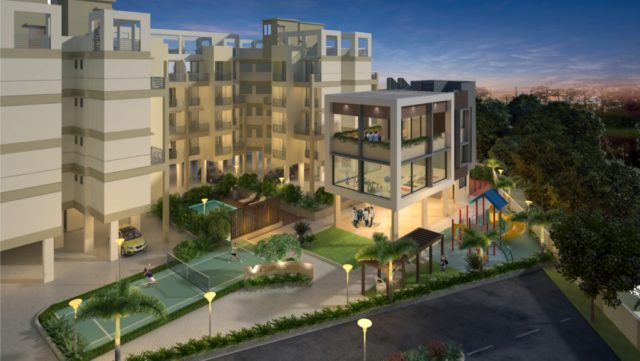It is not a good time to be a home buyer in Mumbai. Crushing property prices keep homes out of the common man, leaving people with no option but to look for properties on the outskirts of the city. The Shrivastavas are a classic example of this, having stayed in rented homes in Mumbai over the past 5 years, while they saved up to buy a home. Finding homes within Mumbai proper unaffordable, they undertook a long search before finally settling for the town of Taloja. “In the coming years, Taloja will develop in a very broad manner. Those people who can’t afford to buy flats in Kharghar can become homeowners in Taloja. There are good facilities here”, says Ashok Kumar Shrivastava, the head of the family.
The Shrivastavas are one among many homebuyers that are gravitating towards this region. A few years ago, Taloja was primarily known as a second-home destination, but the increasing population and rapid price appreciation in the rest of the MMR region has seen it successfully become a first-home destination. This growth was helped by CIDCO (City and Industrial Development Corporation) taking over the development of phase 1 of the town, laying in place the necessary infrastructure and facilities needed to attract buyer interest. Taloja has also benefitted from having the Navi Mumbai International airport in close proximity, situated as it is barely ten minutes away by car.
Prices in Taloja too make for a compelling proposition, averaging about Rs. 4,100 per sq. feet. This makes it much more affordable flats in Taloja than neighboring Kharghar where prices are at about Rs.10,000 per sq. feet. Prices here have been appreciating steadily, rising at about 9.4% per annum. A number of big ticket builders including Megalopolis developers, Enkay Homes and Arihant Superstructures have already setup operations here, and out of a total of 14,100 units that have been constructed, nearly 9,300 have been sold, leaving only about 4,800 unsold. “Taloja is almost half the price of Kharghar. This shows it is more affordable. And people are ready to travel, because it has the metro station which is starting up from Pendhar Taloja to CBD Belapur. Once the Metro is ready it will form the core center of the residential area”, says Ashok Chhajer, CMD of Arihant Superstructures.
Yet this region has its own set of challenges to deal with first. The proposed Metro line along with a flyover bridge connecting Taloja to Kharghar will definitely improve connectivity within the region – but the deadlines for these projects have been revised repeatedly, with no clear roadmap on when they will be executed. Experts believe it will take a while for the region to truly rise and get over its infrastructural handicap. “There is no dearth of bookings in Taloja if you look at the price, but we do not have basic infrastructure in place at the moment. Nor is there any great social infrastructure as yet. We have basic schools, basic shopping facilities. We are going to see better infrastructure coming in, but we will have to give it at least three more years”, says Mohanjeet Singh, founder of New Mumbai Realty and an expert on the Navi Mumbai property market.
The silver lining here is that development work in the region is proceeding quickly, thanks to the intervention of CIDCO and the presence of the MIDC corridor close by. “Basic amenities are in place. I think from an end-user perspective, you can buy the property here. If you are looking for long-term appreciation and looking to live here in couple of years, then you should consider under-construction projects”, says Surabhi Arora, Head of Research at Colliers India.
Projects in Taloja has its perks and it is easy to see why one should invest here. It’s cheaper than neighboring regions and once the airport comes up, prices will definitely go up. But to ensure that Taloja doesn’t suffer the fate of other airport-centric nodes like Ulwe – which still lag behind in terms of basic infrastructure – the government should make sure infrastructure in the region is built up quickly.
Source: Ashwini Priolker, Reporter, NDTV










